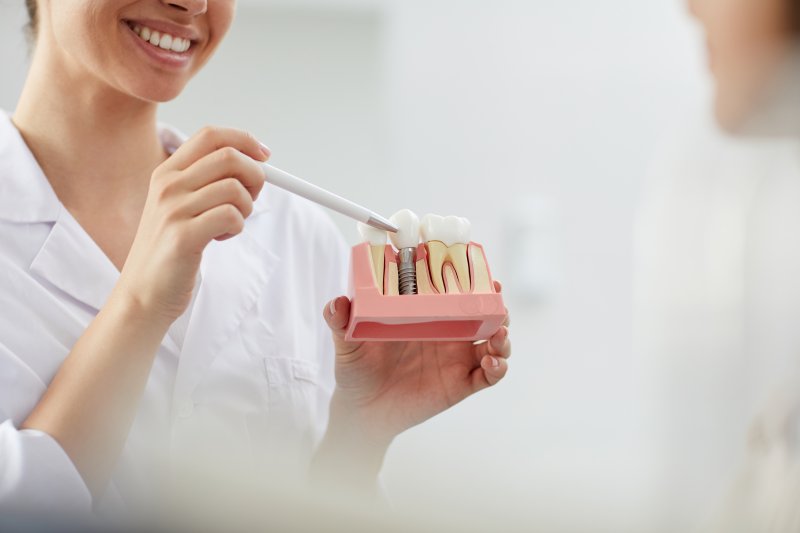
Dental implants are one of the best treatment options for addressing tooth loss. In most cases, this procedure has a success rate of over 95%, especially due to the precise and strategic method for placing them in the jawbone. That said, there’s still a very small chance of failure, and this can happen for several reasons. Keep reading to learn why you may have to remove your dental implant if it fails and what to expect after the process.
How Can Dental Implants Fail?
This treatment can rarely fail due to certain factors, including:
- Peri-implantitis: While highly uncommon, the most common reason for dental implant failure is peri-implantitis, which is a form of gum disease that infects and weakens the gums and connective tissues holding your metal post in place. This can happen due to poor oral hygiene after surgery.
- Bone Loss: Tooth loss can often lead to jawbone deterioration due to the lack of stimulation from tooth roots. If there isn’t adequate bone density to support the implant, it can end in instability and/or failure.
- Physical Trauma: An injury or accident can happen, resulting in a damaged or compromised dental implant.
Removing Dental Implants After Failure
Only if a titanium post fails and cannot be salvaged will it likely need to be removed to preserve any healthy tissue in your jawbone. To remove it, your dentist will strategically and carefully take it out to minimize damage to the surrounding connective tissues, including the lower nerves and upper sinus. In most instances, a small amount of bone along the tip of the dental implant is cut to relieve the tension, allowing a smooth and swift extraction process.
Can You Get Another Dental Implant if Yours Fails?
For some patients, a brand-new metal post can be placed right after removing the failed one, with the help of bone grafting for more efficient support. However, an immediate replacement might not be ideal if there’s too much damage in the extraction area. The removal procedure often leaves a larger hole than the dental implant can fit in, so you’ll need to consult with your dentist about the next best steps, including whether another metal post will be a feasible option.
While removing a dental implant can help preserve the health of your mouth, it doesn’t always have to get to that point to maintain your smile. Be sure to practice great oral hygiene and visit your dentist regularly for checkups so that you can avoid any risk of failure in the long run!
About the Author
Dr. Haroon Randhawa has well over two decades of experience in dentistry, and he loves helping patients improve and restore their smiles. He studied at New York University and received advanced training in various specialty subjects, including dental implants and bone grafts. If you’d like to know more about dental implants or wish to schedule a consultation, visit his website or give him a call today at 972-727-7269.
